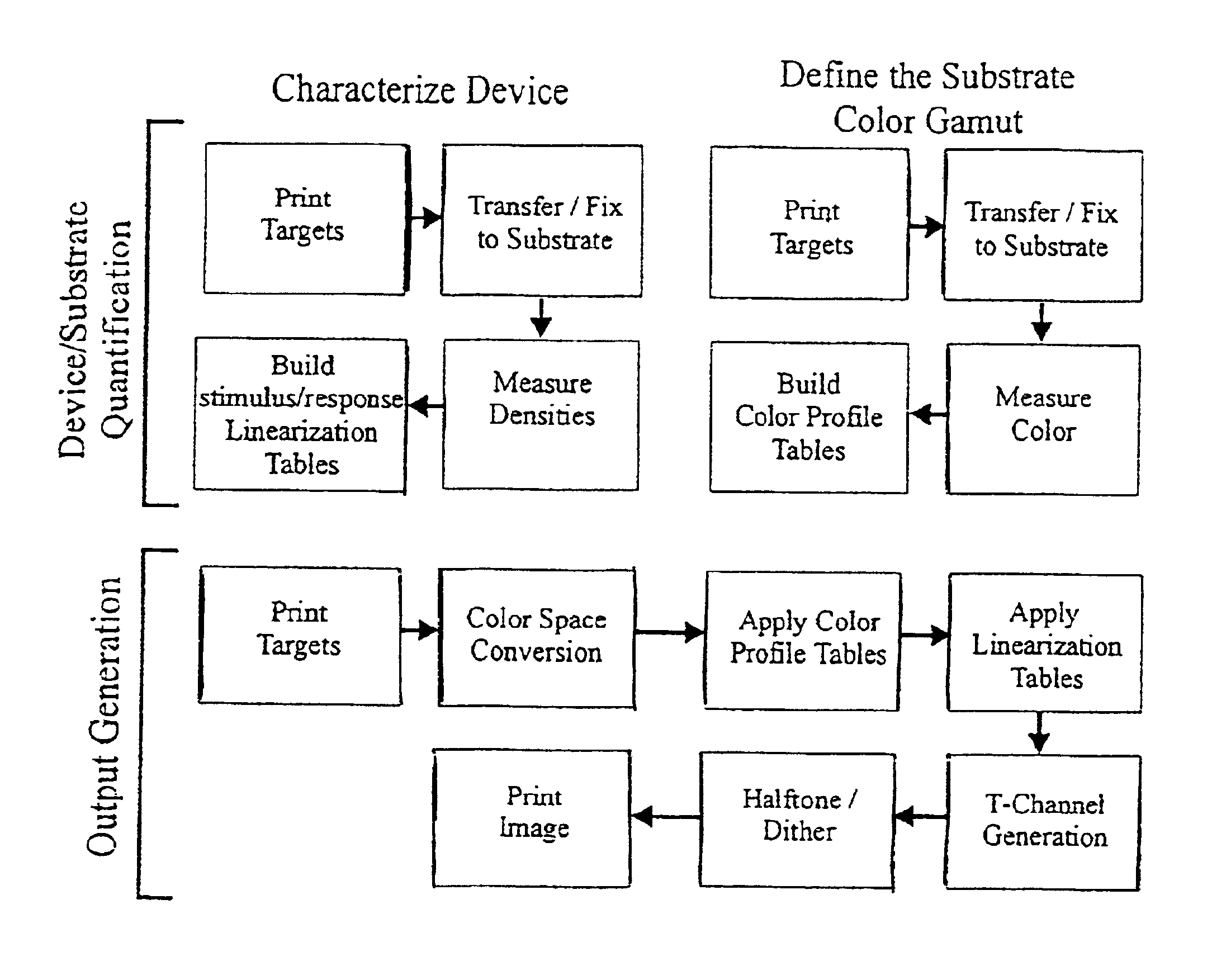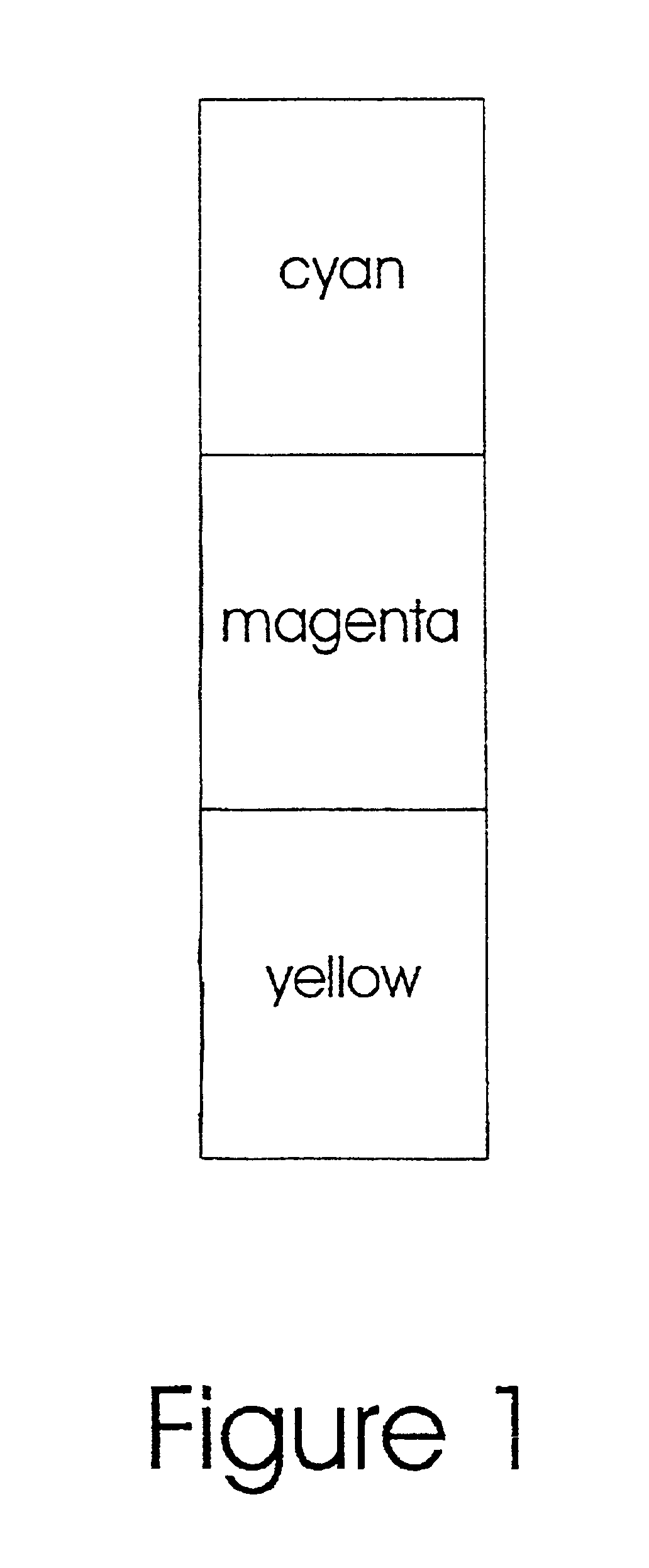Reactive dye printing process
a dye printing and dye technology, applied in the field of printing generally, can solve the problems of affecting the quality of dye printing, the inability to achieve high-quality images, so as to prevent premature or undetectable reaction, above the melting point of wax
- Summary
- Abstract
- Description
- Claims
- Application Information
AI Technical Summary
Benefits of technology
Problems solved by technology
Method used
Image
Examples
Embodiment Construction
In a preferred embodiment of the present invention, a heat-melt ink ribbon is formed composed of at least one colored ink panel. A repeating sequence of colored ink panels may be used. A typical pattern of panels is yellow, magenta, and cyan (FIG. 1), although black, white, or other panels could be interposed (FIG. 2). Colorants used for such ink panels are reactive dyes, which have an affinity for the final substrate, which may be for example, cellulosic fiber, such as cotton, linen, or viscose; polyamide-fiber, such as nylon 6.6; mixtures of cellulose or polyamide with polyester; or protein fibers, such as wool and silk. The colorant(s) bonds permanently to the final substrate by forming a covalent bond between a carbon or phosphorous atom of the dye ion or molecule and an oxygen, sulfur, or nitrogen atom of a hydroxy, a mercapto, or amino group, respectively, of the final substrate.
In an additional embodiment of the invention, a combination of reactive and disperse dyes are used ...
PUM
| Property | Measurement | Unit |
|---|---|---|
| diameter | aaaaa | aaaaa |
| melting point | aaaaa | aaaaa |
| temperature | aaaaa | aaaaa |
Abstract
Description
Claims
Application Information
 Login to View More
Login to View More - R&D
- Intellectual Property
- Life Sciences
- Materials
- Tech Scout
- Unparalleled Data Quality
- Higher Quality Content
- 60% Fewer Hallucinations
Browse by: Latest US Patents, China's latest patents, Technical Efficacy Thesaurus, Application Domain, Technology Topic, Popular Technical Reports.
© 2025 PatSnap. All rights reserved.Legal|Privacy policy|Modern Slavery Act Transparency Statement|Sitemap|About US| Contact US: help@patsnap.com



